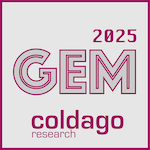 Second meeting with Igneous Systems at NEA in Menlo Park during the last IT Press Tour in December, Kiran Bhageshpur, CEO and founder, gave us an interesting company and product update.
Second meeting with Igneous Systems at NEA in Menlo Park during the last IT Press Tour in December, Kiran Bhageshpur, CEO and founder, gave us an interesting company and product update.We learnt last year in 2016 the nature of the solution with the nano server approach, finally a hard drive associated with a Marvell-based cpu board. It was pretty new surfing on similar ideas like the Kinetic drives initiated by Seagate. The positioning introduced at that time was to deploy on-premise cloud storage – built by an object storage philosophy – available potentially for multiple usages.
The last meeting was a bit a surprise as all the press group realized that the company has made some changes in the messaging. We didn't hear anything about the object storage design i.e nano server, Ethernet drives… or even the chassis design and architecture. I invite the reader to check 3 previous posts I wrote in January 2017, October and April 2016 that give more details on the product. Kiran even shared with us the information that Igneous has licensed the technology to a French open source object storage. Wow I’m surprised again as there is no such serious initiative in France in that category, just a local toy.
The use cases chosen were super limited, we had the feeling that the company has reduced the scope of the solution to finally land on a small field but much more precise. Clearly the firm chose the secondary storage positioning, dedicated to data protection with backup, archiving or even DR for file storage. Igneous recently announced an integration with Datos IO, the market leader in NoSQL data protection.
The solution targets clearly usual suspects in file storage such NetApp, Isilon considered as clear leaders in term deployment numbers but also for Pure Storage FlashBlade. Igneous presents such mode as-a-service with some interesting features and properties: auto-discovery, search and easy restore across tiers, analytics, replication between boxes, versioning, WORM capabilities, multi-threaded processes to boost transfer and reduce latency with dynamic throttling. Some test made demonstrate 300 threads for 20ms latency for NetApp and 200 threads for 40ms latency for Isilon. We regret to not see yet an integration for tiering with fpolicy for instance on NetApp.
Kiran insisted a bit on the cloud native architecture and the container-based microservices philosophy of the solution. He also mentioned DEEPR, Igneous’ erasure coding with prioritized repair.
Once again, object storage ambition is reduced, I should say it realizes its own limitations and the market pressure. At the end, it plays in its corner, in the comfort zone where it excels, secondary storage for capacity and long-term preservation play. Some other vendors have made the experience of bad positioning with over promising features that they finally highly paid with uninstalls and replacements, it's clear in 2017 and players who stayed in that zone are the winners.
The session was pretty good even if we were surprised by the angle chosen. We’ll follow closely Igneous in 2018 to see how the solution will resonate on the market.



















0 commentaires:
Post a Comment